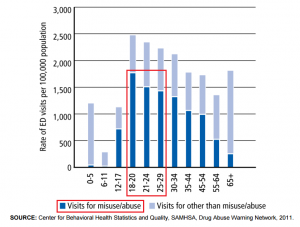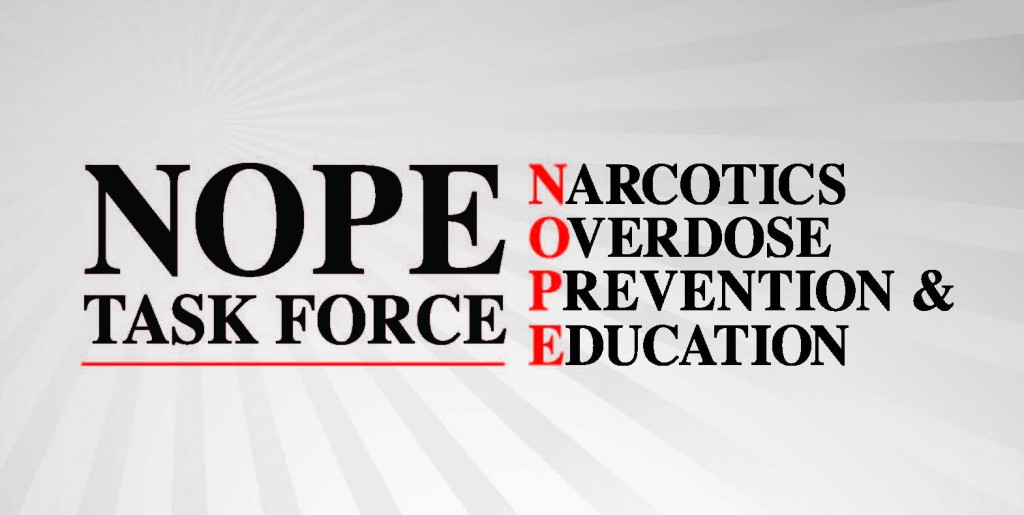
The Pharmacy Alumni Society Pharmathon 5K is an idea that arose from one graduate’s passion and desire to raise awareness about prescription drug misuse.
The Generation Rx initiative is a cause I’ve been involved with for over half of my time as a higher education student. I fell into it partly by chance: I have a passion for teaching and had an opportunity to participate in an event for high school students, teaching them about pharmacy and medication safety. It was during this event that I first learned about The Generation Rx Initiative and its history at The Ohio State University College of Pharmacy, and I’ve been involved with the cause in various ways since then. I have come to appreciate the unique ways one can participate in spreading awareness about this public health issue. Through my work, I’ve learned what it takes to raise awareness about a particular cause. Here are three of the most important lessons I’ve gathered from other students’ passions and my own work with Generation Rx:
- Discover your passion. It is not necessary to have a completely clear understanding of where you want your career to end up or how to get there. While you can, take time to explore things you might be curious about. Get involved in projects that pique your interest, even slightly. You never know how it can lead you down a path you might not have otherwise discovered. A classmate and coworker of mine became interested in naloxone. By working with a doctor at the hospital at which we are interns, she was able to learn about naloxone and the impact she could have on patient care with it. Since working with that doctor, she has become an advocate for naloxone in Ohio and provided testimony on the subject, which eventually led to the passing of an Ohio bill that allows pharmacists and pharmacy interns to dispense naloxone without a prescription. (See her post here.) Once you find a subject about which you are interested, you can make a great impact on the community, too.
- Be proactive. If you see an opportunity to do something great or fill a void, take it. Be willing to take risks on opportunities that may come your way. Don’t wait for the “perfect moments” to come to you; sometimes, you need to create them yourself. For example, at Ohio State, students came together to form an interdisciplinary veterinary pharmacy student organization to fulfill an unmet need. The group, started at the beginning of the 2015-2016 academic year, has raised awareness about topics within the field of veterinary pharmacy, such as zoonotic diseases (diseases that can be spread from animals to humans) and over-the-counter medications that are safe to use in animals.
- Ask for help. Even the most capable person needs to ask for help sometimes. In pursuing a passion or a cause, mentorship can go a long way. Your mentors can connect you with resources (human or otherwise) that can help you move your cause or passion forward. Additionally, plans can go awry, but asking for help should not be considered a sign of weakness. A classmate of mine planned to present a series of medication safety modules at an area high school. Due to extenuating circumstances, he was unable to continue working with the school with which he had originally planned to work. With the help of a trusted mentor, he was able to connect with a different school that ended up working wonderfully for his project.
Now, I will not suggest that these three tips are the only requirements in pursuing a cause. However, they have served me well in my work with Generation Rx. I encourage you to keep these guidelines in mind to grow your own passions and see where you can go with them.
 Nira Kadakia is a fourth-year Doctor of Pharmacy candidate at The Ohio State University College of Pharmacy. She has been involved with the Generation Rx Initiative since 2012, serving as a student assistant at the Generation Rx Lab at the Center of Science Industry (COSI) and as president of OSU’s Generation Rx Collaborative. She also served as student editor for the Generation Rx University Voices blog for almost two years.
Nira Kadakia is a fourth-year Doctor of Pharmacy candidate at The Ohio State University College of Pharmacy. She has been involved with the Generation Rx Initiative since 2012, serving as a student assistant at the Generation Rx Lab at the Center of Science Industry (COSI) and as president of OSU’s Generation Rx Collaborative. She also served as student editor for the Generation Rx University Voices blog for almost two years.


 Sarah Nerad has made it her life purpose to create the same opportunities that she had to enter and sustain recovery for young people across the country. She was a founding member of Young People in Recovery, a Substance Abuse and Mental Health Services Administration (SAMHSA) intern in the Center for Substance Abuse Treatment Department of Consumer Affairs, and a past board member of The Association of Recovery Schools and Ohio Citizen Advocates for Addiction Recovery. She helped create the Collegiate Recovery Community at Ohio State and currently serves as the Program Manager. She also helped establish OSU’s Higher Education Center for Alcohol and Drug Prevention and Recovery and serves as its Director of Recovery. Additionally, she was appointed to serve on the SAMHSA Advisory Committee for Women’s Services to represent the needs of women and girls in recovery.
Sarah Nerad has made it her life purpose to create the same opportunities that she had to enter and sustain recovery for young people across the country. She was a founding member of Young People in Recovery, a Substance Abuse and Mental Health Services Administration (SAMHSA) intern in the Center for Substance Abuse Treatment Department of Consumer Affairs, and a past board member of The Association of Recovery Schools and Ohio Citizen Advocates for Addiction Recovery. She helped create the Collegiate Recovery Community at Ohio State and currently serves as the Program Manager. She also helped establish OSU’s Higher Education Center for Alcohol and Drug Prevention and Recovery and serves as its Director of Recovery. Additionally, she was appointed to serve on the SAMHSA Advisory Committee for Women’s Services to represent the needs of women and girls in recovery.
 Laura Farleman is in her second professional year at Cedarville University School of Pharmacy, and in her last year as a Division II student-athlete.. She serves as the Great-Midwest Athletic Conference National Student-Athlete Advisory Committee Representative and the Division II student-athlete representative to the Committee on Competitive Safeguards and Medical Aspects of Sports, contributing student-athlete insight about health and safety in collegiate athletics. Long term, Laura is pursuing a career in neurology in hopes of improving the longevity and quality of life of individuals with neurological conditions.
Laura Farleman is in her second professional year at Cedarville University School of Pharmacy, and in her last year as a Division II student-athlete.. She serves as the Great-Midwest Athletic Conference National Student-Athlete Advisory Committee Representative and the Division II student-athlete representative to the Committee on Competitive Safeguards and Medical Aspects of Sports, contributing student-athlete insight about health and safety in collegiate athletics. Long term, Laura is pursuing a career in neurology in hopes of improving the longevity and quality of life of individuals with neurological conditions.





















